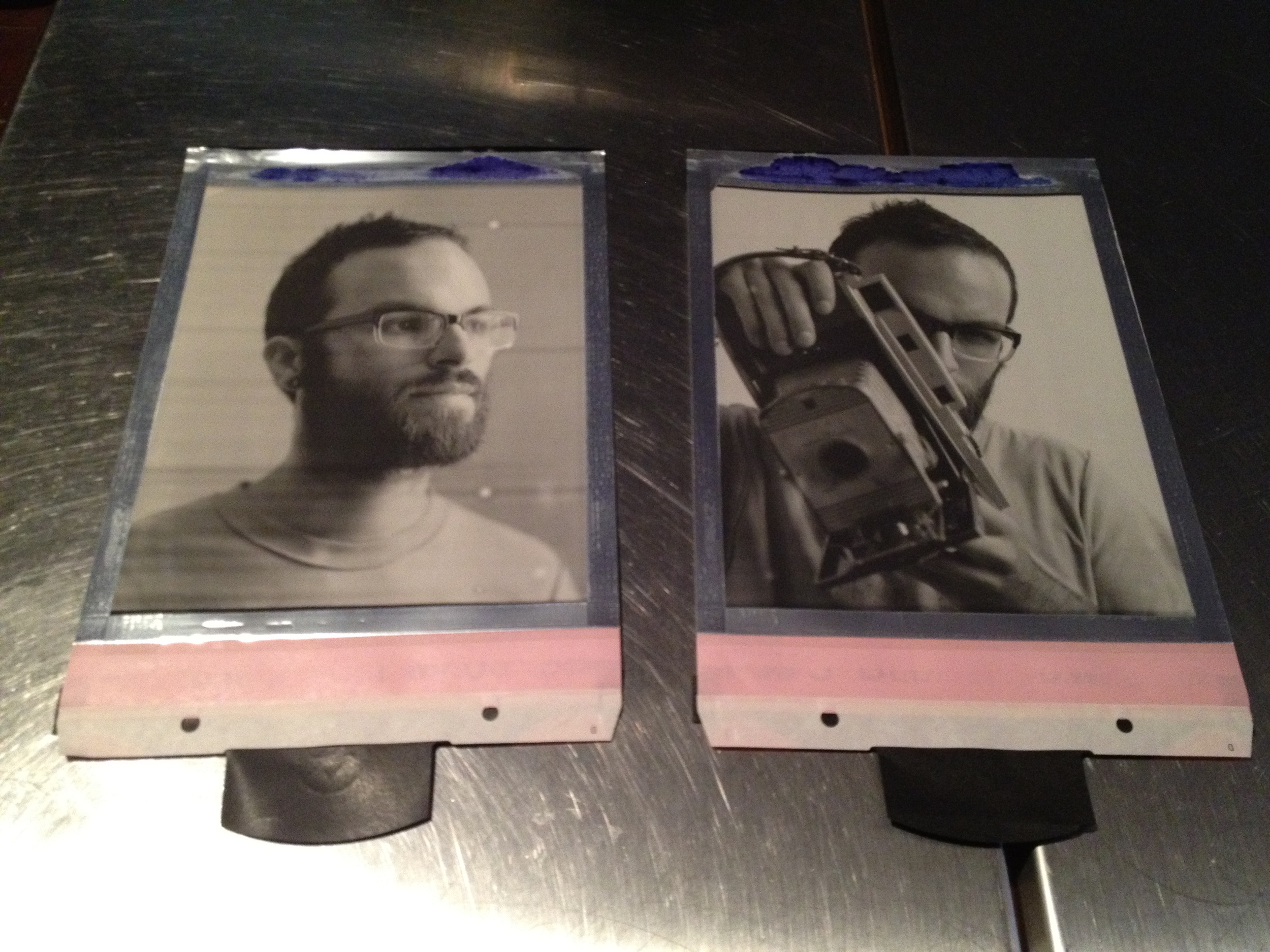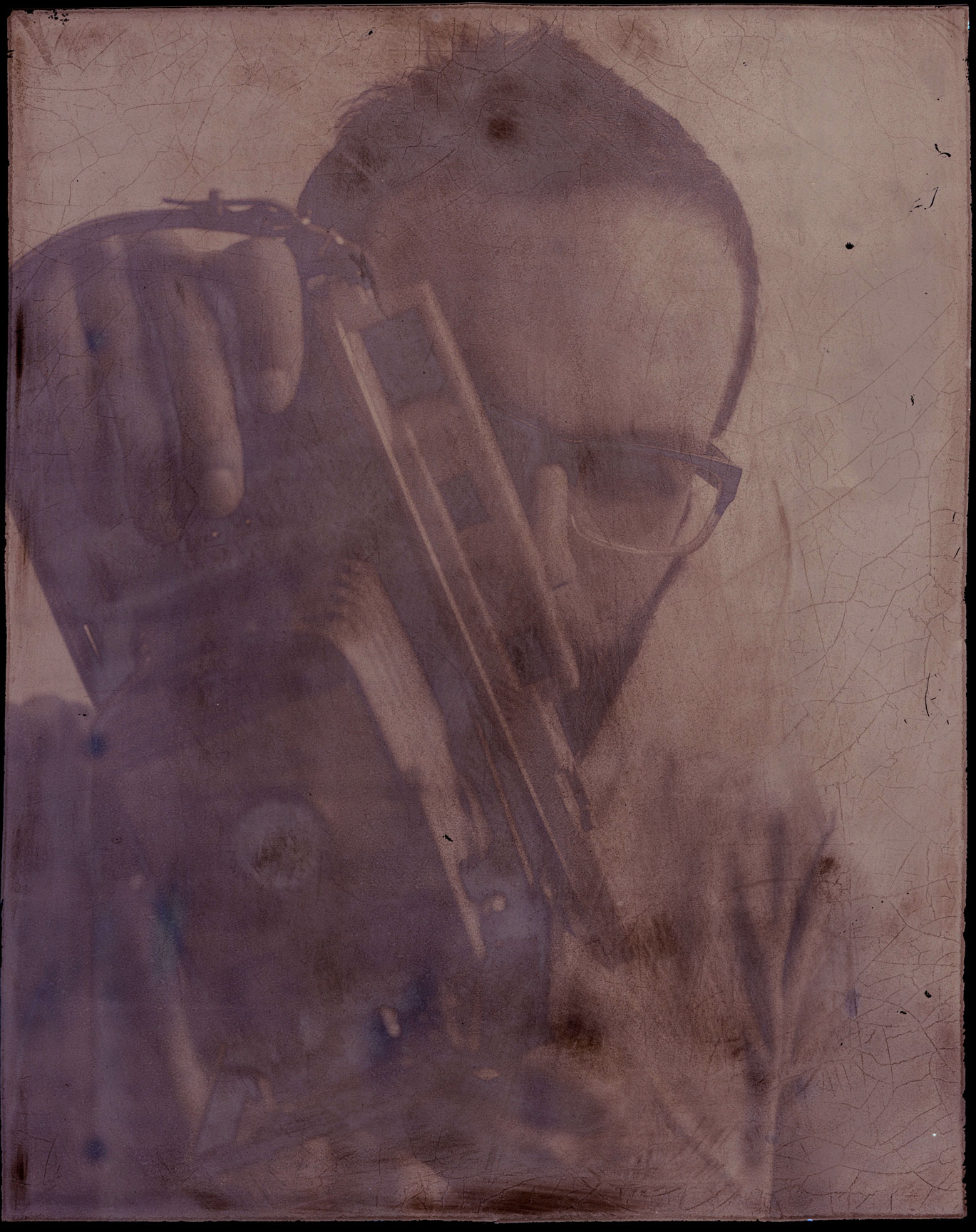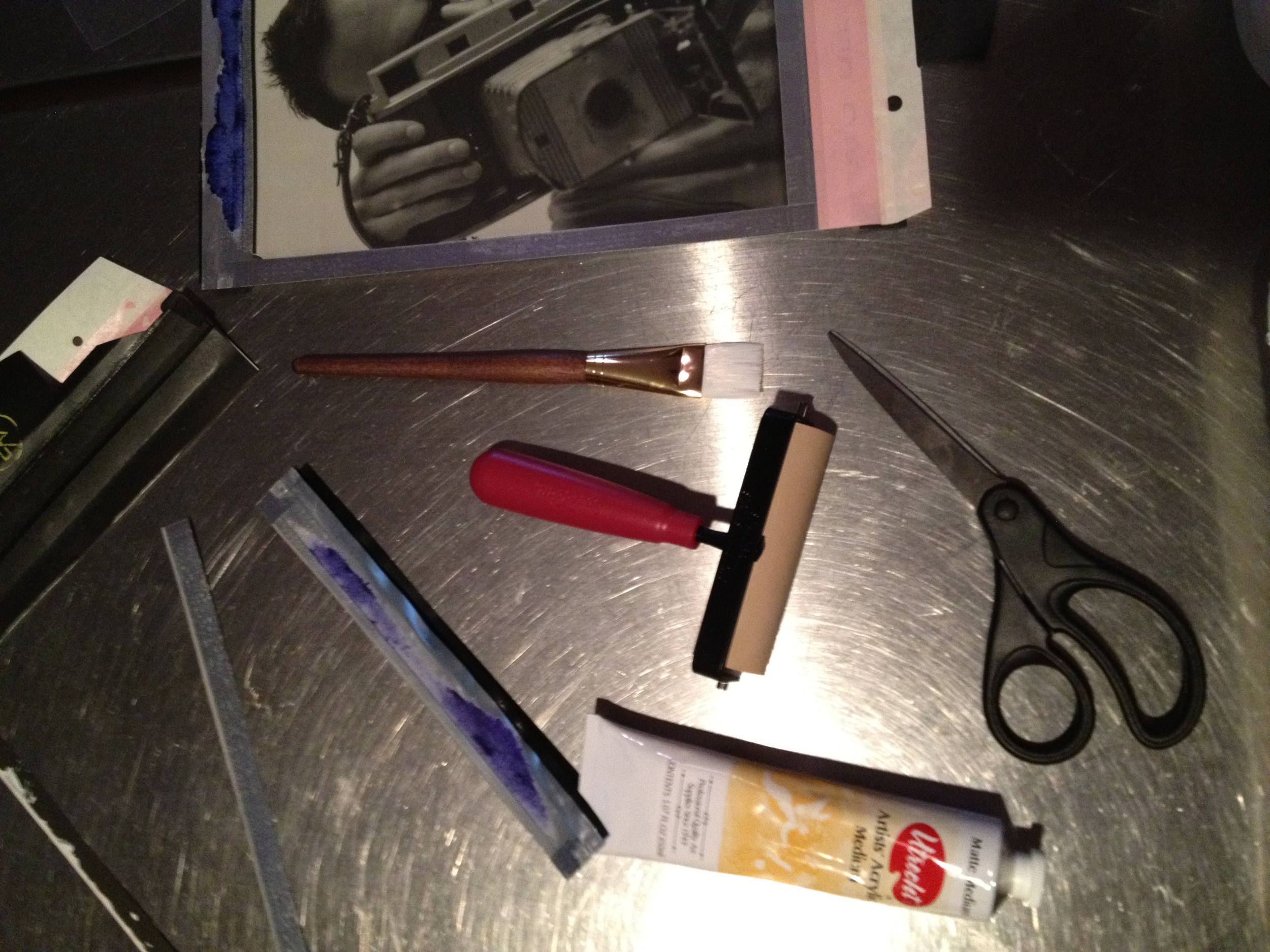So I recently picked up a few boxes of the new Impossible Project 8x10 instant film. I've been waiting for this for a long time. Polaroid made the last 8x10 batch in 2006. It's been so long that the pods have all dried up, which makes it unusable even if you could find a box on ebay. Enter the Impossible Project. The Impossible Project had bought all of the 8x10 production machinery from Polaroid just days before they went into bankruptcy. They focused on all of the smaller films first, but finally, they were able to put their attention to starting up the 8x10 production. This is some of the film from the first production run. I took a workshop at The Impossible Project office to make sure I got a handle on how to use the new film. It's not a peel apart film like the original polaroid was, although you still need the polaroid processor to use it.
First thoughts are this is a very cool development for old process lovers. Being able to shoot this format will bring a whole new generation to large format photography and keep it alive. The artistic possibilities are also something that you will never get from digital or some filter that becomes the new rage. Instagram can't create these effects. There is something to be said for doing it the analog way.
Below are the two shots I took. One of their employees, Kyle, was kind enough to model for me.
You could actually just keep it like this and that could be your final product. But....there are other options of what you can do with the new film. I experimented with 2 of the options.
1. Do an emulsion lift and put the lifted emulsion onto some other medium. In this case, I put it on some 300 gsm matte paper(below), which is my favorite application for polaroid.
2. Scan the negative side, invert it, and blow it up from there(Below). I definitely see some fun applications for this. I love the dark, mysterious nature of this.
First things first. Get your tools together. Cut off the edges of the film first. That will make the lift so much easier.
So, I took a few videos showing how I did the emulsion lift. It's a little different from the original polaroid lifts. You used to have to boil water, then put the polaroid in. With the Impossible Project film, you just need hot water, comfortable to the touch.
Just play them one right after the other to see the process.
Sorry about the sloppy film work here...I took my eye off the camera a few times...lol.
Ok, so I forgot to shoot this image for the other photograph...so this is where you use a piece of transparent film to get the emulsion out of the water. You can now shape the emulsion how you wish it to show up on your fine art paper.
So I used a 300 gsm paper for my base. It's good to use a thick paper as otherwise the wetness will make it curl up. I used Matte Medium for the adhesive base. Just use a brush to apply evenly.

Once again...sorry, we're switching up images to show you the last phase...forgot to film it on the other one.
.
Here's the inverted Scan again. You have to bring down the blacks quite a bit to see all of the detail.
It's funny, I learned that by baking the emulsion in my attempt to dry it out faster, it actually made it turn sepia. So, if you like that, get your bake on. 300 degrees, keep the door open, and cook until you like it...just don't burn it. ;)
As you can see, it now has a sepia tonality to it on the top. The print was hanging out of my little toaster oven, so the bottom is still more black and white...so I thought I'd keep it that way.
Well, that's it for now. I'm going to do another shoot from start to finish and try to make it one movie next time. Until then, I hope some of you go out, pick up some film, and keep this wonderful large format art alive!
-James




